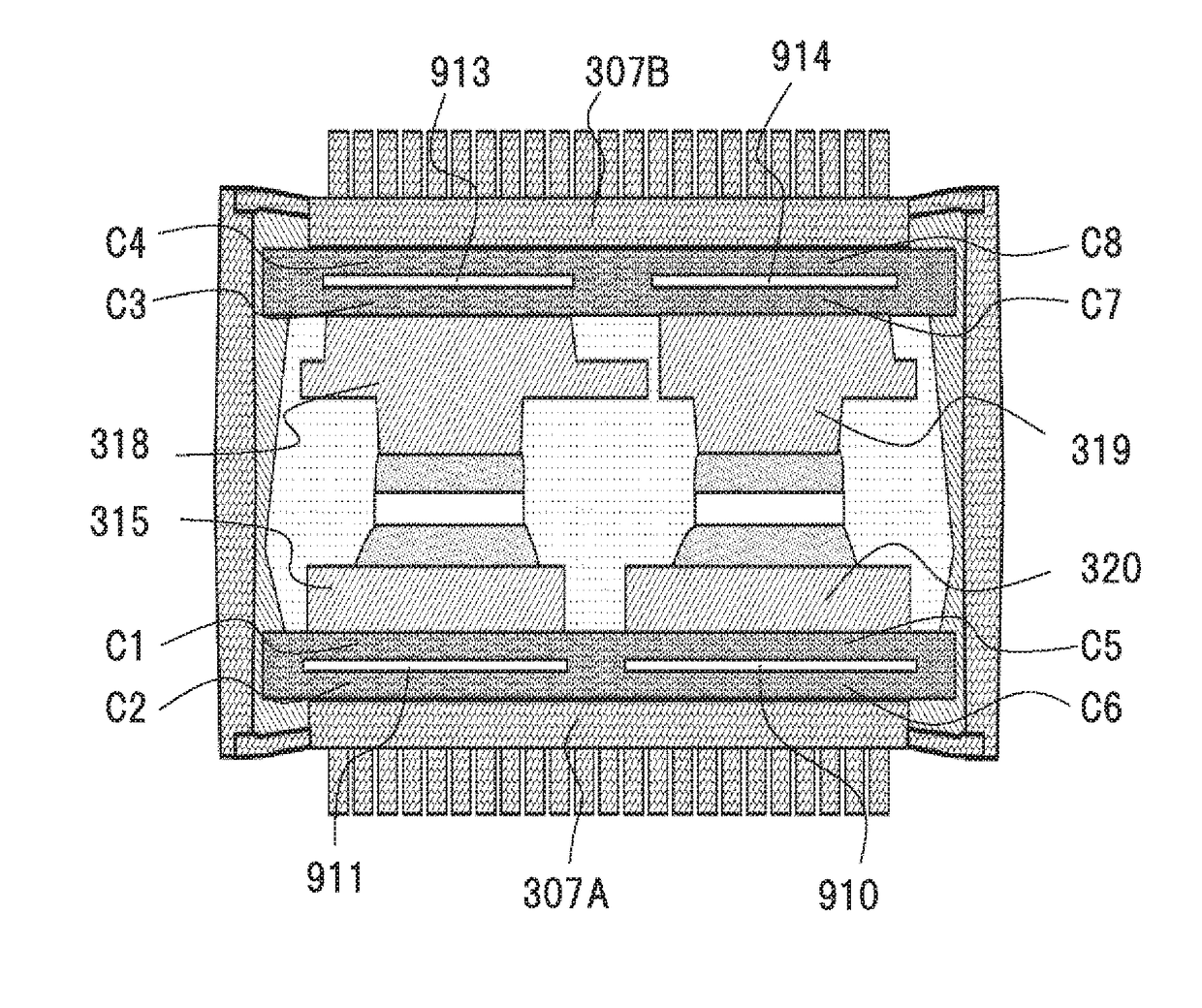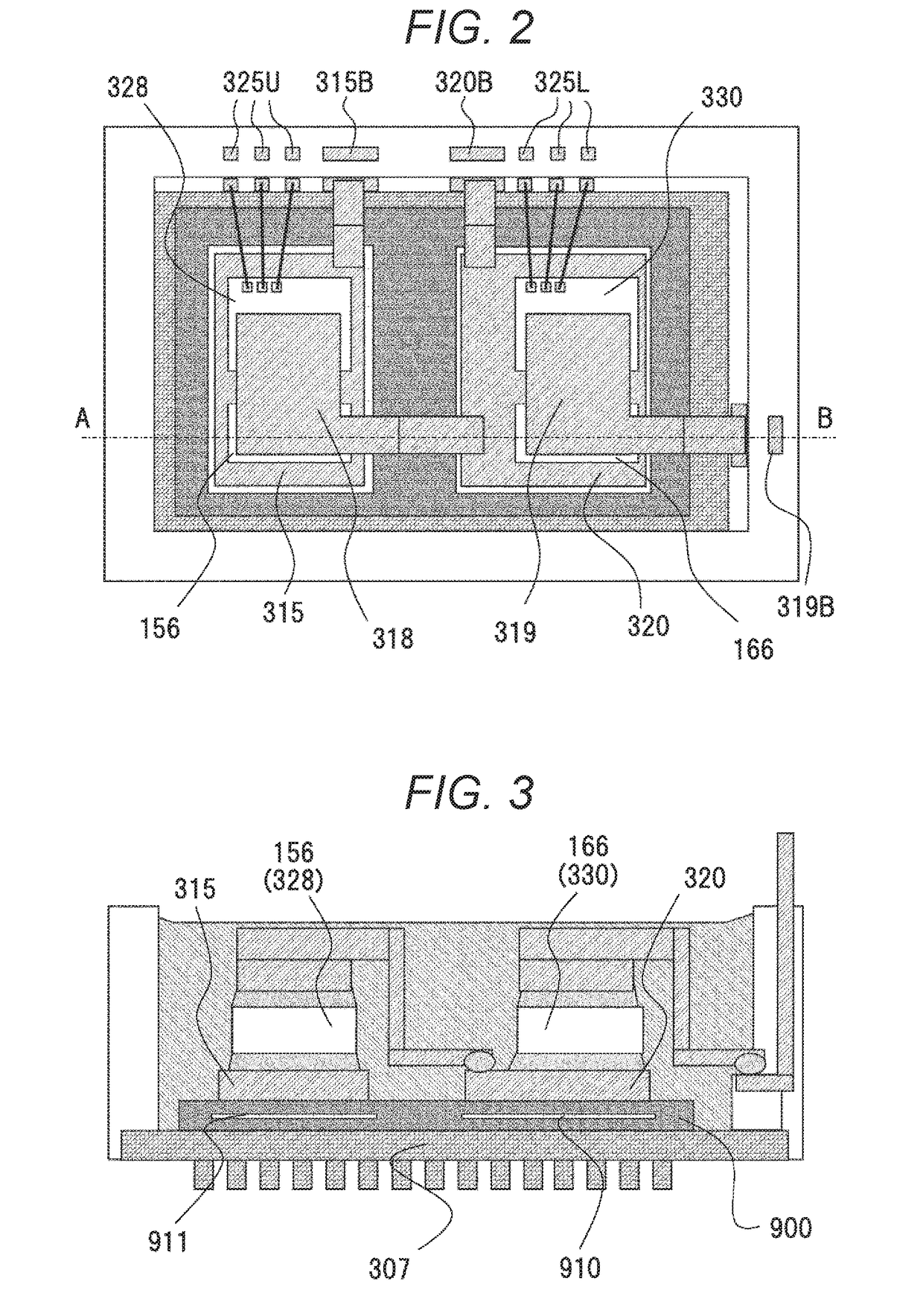Power Module
a power module and power technology, applied in the field of power modules, can solve the problems of deteriorating heat dissipation performance, and achieve the effect of reducing the total thickness of the insulating layer and more heat dissipation
- Summary
- Abstract
- Description
- Claims
- Application Information
AI Technical Summary
Benefits of technology
Problems solved by technology
Method used
Image
Examples
first embodiment
[0038]First, a configuration of a power module will be described by using FIG. 1 to FIG. 3.
[0039]FIG. 1 is a circuit configuration diagram of a power module 300 of the present embodiment. The power module 300 includes an IGBT 328 and a diode 156, which constitute an upper arm circuit, and an IGBT 330 and a diode 166, which constitute a lower arm circuit. Herein, IGBT is an abbreviation of an insulated-gate-type bipolar transistor. A circuit which is connected to a positive electrode side of a battery and creates alternating-current waveforms by switching of a power semiconductor element is an upper arm circuit, and a circuit which is connected to a negative electrode side or GND side of the battery and creates alternating-current waveforms is a lower arm circuit. When neutral grounding is to be carried out, the lower arm circuit is connected to a negative electrode side of a capacitor instead of GND.
[0040]The power module 300 is provided with conductor plates 315, 318, 320, and 319...
third embodiment
[0095]A power module will be described by using FIG. 16 to FIG. 20.
[0096]FIG. 16 (a) is a perspective view of the power module of the present embodiment, and FIG. 16 (b) is a cross-sectional view of a section by a cross section E-F of FIG. 16 (a). The power module 300 of the present embodiment has a both-side cooling structure in which a power semiconductor element is housed in a cooling body 304, which is a CAN-type cooler. The cooling body 304 has a first heat dissipating surface 307A and a second heat dissipating surface 307B on which heat dissipating fins 305 are formed, thin portions 304A which connect heat dissipating surfaces and a frame body, and a flange portion 304B. A circuit body including the power semiconductor element and conductor plates is inserted from an insertion opening 306 of a cooling body 304, which is formed in a bottomed tubular shape, and is sealed by a sealing material 351, thereby forming the power module 300. The power module of the present embodiment ...
fourth embodiment
[0105]A power module will be described by using FIG. 21.
[0106]FIG. 21 is a cross-sectional view of the power module of the present embodiment. This corresponds to FIG. 17 about the power module of the third embodiment. A point changed from the third embodiment is that the number of intermediate conductors is increased.
[0107]Intermediate conductors 910a and 910b are disposed between the conductor plate 320 and the heat dissipating surface 307A to which an alternating-current voltage is applied. Intermediate conductors 911a and 911b are disposed between the conductor plate 315 and the heat dissipating surface 307A to which a direct-current voltage is applied. Intermediate conductors 913a and 913b are disposed between the conductor plate 318 and the heat dissipating surface 307B to which an alternating-current voltage is applied. Intermediate conductors 914a and 914b are disposed between the conductor plate 319 and the heat dissipating surface 307B to which a direct-current voltage is...
PUM
 Login to View More
Login to View More Abstract
Description
Claims
Application Information
 Login to View More
Login to View More - R&D
- Intellectual Property
- Life Sciences
- Materials
- Tech Scout
- Unparalleled Data Quality
- Higher Quality Content
- 60% Fewer Hallucinations
Browse by: Latest US Patents, China's latest patents, Technical Efficacy Thesaurus, Application Domain, Technology Topic, Popular Technical Reports.
© 2025 PatSnap. All rights reserved.Legal|Privacy policy|Modern Slavery Act Transparency Statement|Sitemap|About US| Contact US: help@patsnap.com



